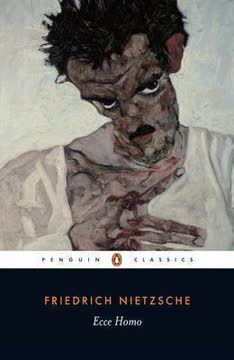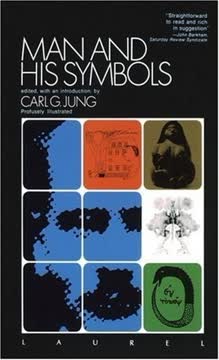つの重要なポイント
1. 集合的無意識には普遍的な元型が含まれている
集合的無意識は、個人的なシステムに閉じ込められたものではなく、世界と同じくらい広く、すべての世界に開かれた純粋な客観性である。
集合的無意識と個人的無意識の違い。 集合的無意識は、遺伝的で普遍的なパターンやイメージ(元型)を含む、心のより深い層である。個人的無意識が個々の経験から形成されるのに対し、集合的無意識は文化や時代を超えてすべての人間に共有されている。それは本能的な行動や知覚のパターンの源である。
普遍的な人間の経験。 集合的無意識の内容は、誕生、死、母子の絆、英雄の旅など、基本的な人間の経験や関係を反映している。これらの普遍的なテーマは、神話、童話、宗教的象徴に現れる。元型を理解することで、人類の共有する心理的遺産や自分自身の心の深層について洞察を得ることができる。
2. 元型は人間の経験を形作る原初的なイメージである
元型は本質的に無意識の内容であり、意識され知覚されることによって変化し、現れる個々の意識から色を取る。
遺伝的な心理構造。 元型は集合的無意識から派生する生得的で普遍的なパターンやイメージである。これらは典型的な人間の経験、関係、動機を表している。一般的な元型には以下のものが含まれる:
- 母
- 父
- 子供
- 英雄
- 賢者
- トリックスター
- 影
知覚と行動の形成。 元型自体は抽象的な形であるが、文化や個々の経験によって具体的なイメージ、象徴、行動として表現される。それらは私たちが世界をどのように知覚し、反応するかに影響を与え、無意識のうちに私たちの経験や関係を構造化する。
3. ペルソナは私たちが世界に対して見せる仮面である
ペルソナは個々の意識と社会との間の複雑な関係のシステムであり、一方では他者に明確な印象を与え、他方では個人の真の性質を隠すための一種の仮面である。
社会的適応。 ペルソナは社会の期待に適応し、社会的な相互作用をナビゲートするための公の顔や社会的仮面である。それは私たちの真の個性と社会規範との間の妥協を表している。社会で機能するために必要であるが、ペルソナに過度に同一化すると真の自己を失う可能性がある。
同一化の危険性。 ペルソナに過度に同一化すると以下の問題が生じる可能性がある:
- 心の他の側面の無視
- 不誠実さと内的葛藤
- 変化する状況への適応困難
- ペルソナがもはや適合しない中年の危機
4. アニマ/アニムスは内なる異性の人格を表す
アニマは教義的な意味での魂ではなく、哲学的な概念であるアニマ・ラショナリスではなく、無意識、原始的な心、言語と宗教の歴史のすべての声明を満足に要約する自然な元型である。
対性的元型。 アニマ(男性において)とアニムス(女性において)は、無意識の内なる異性の人格を表している。この元型は、意識的な人格において未発達または抑圧されていることが多い資質や可能性を具現化している。アニマ/アニムスを統合することは心理的な全体性にとって重要である。
現れと発展。 アニマ/アニムスはしばしば夢や幻想に現れ、ロマンティックなパートナーに投影されることがある。その発展は、原始的で本能的な形からより洗練された精神的な賢者の形へと進む。この元型を統合することは以下を含む:
- 投影の認識
- それが表す未発達の資質の発展
- よりバランスの取れた両性具有的な人格の達成
5. 影は私たちの抑圧された側面を含んでいる
劣等感が意識されている場合、それを修正する機会が常にある。さらに、それは他の関心事と常に接触しているため、絶えず修正される。しかし、それが抑圧され意識から隔離されると、決して修正されない。
人格の暗い側面。 影は私たちが拒絶し、抑圧し、否定する側面を表している。それはしばしば社会的に受け入れられない衝動、欲望、特性を含み、私たちの意識的な価値観や自己イメージと対立する。影を認識し統合することは心理的成長と誠実さにとって不可欠である。
抑圧の危険性。 影を抑圧することは以下の問題を引き起こす可能性がある:
- 否定的な特性の他者への投影
- 抑圧された内容の突然の爆発
- 心理的な不均衡と神経症
- 限られた自己認識と個人的成長
影を統合することは、これらの拒絶された側面を認識し受け入れることを含み、それによってより大きな全体性、創造性、活力をもたらすことができる。
6. 個性化は無意識の内容を統合するプロセスである
個性化とは「個人」になることを意味し、「個性」が私たちの最も内なる、最後の、比類のない独自性を包含する限り、それはまた自分自身になることを意味する。したがって、個性化を「自己実現」と訳すことができる。
全体性への旅。 個性化は、無意識の内容を意識に統合し、独自で全体的な人格を発展させる生涯のプロセスである。このプロセスは、さまざまな元型や無意識の側面に直面し、それを統合することを含む。
個性化の段階:
- ペルソナと影に直面する
- アニマ/アニムスに出会い統合する
- 自己元型(心理的全体性を表す)に出会う
個性化には継続的な自己反省、夢分析、無意識の素材との積極的な関与が必要である。それはより大きな自己認識、誠実さ、意識と無意識の側面の間のよりバランスの取れた関係をもたらす。
7. 象徴は意識と無意識の心をつなぐ
象徴は一般的に知られている何かを偽装するサインではなく、他の方法ではまだ表現できないアイデアを表現するものである。
変革の力。 象徴は意識と無意識の内容をつなぐ橋渡しとして機能し、複雑または抽象的なアイデアを具体的でしばしば視覚的な形で表現する。それらは心理的エネルギーを変換する力を持ち、無意識の内容を意識に、またその逆に移動させることを促進する。
生きた象徴と死んだ象徴。 ユングは、意味が豊かで心理的エネルギーを変換する力を持つ生きた象徴と、感情的な影響力と変革力を失った死んだ象徴を区別する。生きた象徴はしばしば夢や積極的な想像の中で自発的に現れ、死んだ象徴は元の活力を失った教条的な宗教的または文化的表現に見られることが多い。
8. 夢は無意識の内容を明らかにし、意識を補償する
夢は魂の最も内なる、最も秘密の隠れた場所にある小さな隠れた扉であり、エゴ意識が存在する前から存在していた宇宙的な夜に開かれている。
無意識への窓。 夢は無意識の素材に直接アクセスする手段を提供し、覚醒意識では利用できないか抑圧された内容をしばしば表現する。それらは象徴的な言語を使用して重要な心理的情報を伝え、個性化のプロセスを導くことができる。
補償機能。 夢はしばしば意識的な態度や視点を補償し、心のバランスを取る。夢は以下のことを行うことがある:
- 無視された人格の側面を提示する
- 状況に対する代替の視点を提供する
- 潜在的な危険や不均衡を警告する
- 問題に対する創造的な解決策を提供する
夢を分析するには、その象徴的な言語と個人的な連想を理解し、意識的な態度に対する補償機能を考慮する必要がある。
9. 宗教的および神話的象徴は集合的無意識から生じる
自然のすべての神話的なプロセス、たとえば夏と冬、月の位相、雨季などは、これらの客観的な出来事の寓話ではなく、無意識の内なるドラマの象徴的な表現であり、投影を通じて人間の意識にアクセス可能になる。
神話の心理的起源。 宗教的および神話的象徴は、単なる作り話や寓話ではなく、集合的無意識に根ざした深い心理的現実の表現である。それらは基本的な人間の経験や心理的プロセスを表し、外部の世界に投影される。
心理的意義。 宗教的および神話的象徴を心理的に理解することは以下のことを明らかにする:
- 普遍的な人間の経験と課題
- 心の構造とダイナミクスに関する洞察
- 個人的な心理的発展のための指針
- 文化的および歴史的な隔たりを超えて共通の人間のテーマを明らかにする
10. 現代人は象徴的な意味との接触を失っている
私たちは父祖が建てた家を荒廃させ、今では父祖が知らなかった東洋の宮殿に侵入しようとしている。
象徴的な貧困。 現代の西洋文化は、生きた象徴や神話的思考との多くのつながりを失っている。この象徴的な意味からの断絶は以下の問題を引き起こしている:
- 心理的な不均衡と神経症
- 意味と目的の喪失
- 自然と無意識からの疎外
- 外国の精神的伝統への魅力
象徴的な生活の再発見。 象徴的な意味と再接続するために、ユングは以下を提案している:
- 夢と積極的な想像に取り組む
- 神話学と比較宗教を学ぶ
- 芸術的および創造的表現を探求する
- 無意識との個人的な関係を発展させる
- 自分の文化的ルーツを維持しながら他の文化からの心理的洞察を統合する
象徴と神話的思考の力を再発見することにより、現代の個人は心のバランスを回復し、人生により大きな意味を見出すことができる。
最終更新日:
FAQ
What’s The Basic Writings of C.G. Jung about?
- Exploration of the psyche: The book provides a comprehensive overview of Jung's theories on the human psyche, focusing on the unconscious and its influence on behavior.
- Collective unconscious concept: Jung introduces the idea of the collective unconscious, which contains archetypes and shared human experiences.
- Individuation process: It discusses the process of integrating unconscious material into consciousness, crucial for personal development and self-realization.
- Psychological and religious themes: Jung examines the relationship between psychology and religion, suggesting that religious experiences are rooted in the unconscious.
Why should I read The Basic Writings of C.G. Jung?
- Foundational psychological concepts: The book is essential for understanding analytical psychology and Jung's contributions to the field.
- Rich insights into behavior: Jung's exploration of dreams, archetypes, and the unconscious provides profound insights into human behavior.
- Integration of spirituality: It bridges the gap between psychological theory and spiritual experience, relevant for those interested in both fields.
- Historical significance: Jung's writings offer a historical perspective on the evolution of psychological thought and its impact on contemporary practices.
What are the key takeaways of The Basic Writings of C.G. Jung?
- Understanding the unconscious: The unconscious is a dynamic part of the psyche that influences consciousness and behavior.
- Role of archetypes: Archetypes are universal symbols that shape human experiences and cultural narratives.
- Individuation process: The journey toward self-realization involves integrating various aspects of the psyche for personal growth.
- Psychological and spiritual integration: Jung emphasizes the importance of integrating spiritual experiences into psychological practice.
What are the best quotes from The Basic Writings of C.G. Jung and what do they mean?
- "The unconscious is the matrix of the human mind." This highlights the foundational role of the unconscious in shaping thoughts and behaviors.
- "The privilege of a lifetime is to become who you truly are." It underscores the importance of individuation and self-realization.
- "I am not what happened to me, I am what I choose to become." This emphasizes personal agency and the potential for growth beyond past experiences.
- "The psyche is the greatest of all cosmic wonders." Jung emphasizes the complexity and depth of the psyche in understanding human existence.
What is the collective unconscious according to Jung in The Basic Writings of C.G. Jung?
- Shared human experiences: The collective unconscious is a part of the unconscious mind shared among all humans, containing universal memories and archetypes.
- Archetypes as patterns: These are innate, universal symbols and themes that shape human experiences across cultures.
- Influence on behavior: The collective unconscious connects personal experiences to broader human narratives, influencing individual behavior and cultural phenomena.
How does Jung define archetypes in The Basic Writings of C.G. Jung?
- Universal symbols: Archetypes are innate, universal symbols residing in the collective unconscious, representing fundamental human experiences.
- Influence on psyche: They shape perceptions, emotions, and behaviors, often manifesting in dreams, myths, and cultural narratives.
- Examples of archetypes: Common archetypes include the Hero, the Mother, and the Shadow, each representing different aspects of the human experience.
What is the individuation process described in The Basic Writings of C.G. Jung?
- Integration of self: Individuation is the process of integrating various aspects of the self, including the conscious and unconscious, for a balanced personality.
- Encountering the Shadow: It involves confronting and assimilating the Shadow, or repressed parts of the self, leading to greater self-awareness.
- Spiritual growth: The process fosters a deeper connection to the self and the collective unconscious, essential for personal development.
How does Jung differentiate between personal and collective unconscious in The Basic Writings of C.G. Jung?
- Personal unconscious: Contains repressed memories, forgotten experiences, and individual complexes unique to each person.
- Collective unconscious: Holds universal archetypes and shared human experiences that transcend individual lives and cultures.
- Interconnectedness: While the personal unconscious is shaped by individual experiences, the collective unconscious connects all humans through shared symbols and themes.
What is the significance of dreams in Jung's writings in The Basic Writings of C.G. Jung?
- Symbolic representation: Dreams are symbolic expressions of the unconscious, providing insights into unresolved conflicts and hidden aspects of the self.
- Path to individuation: Analyzing dreams is crucial for integrating unconscious material into conscious awareness.
- Personal and collective meanings: Dreams reveal both personal issues and collective archetypal themes, valuable for understanding the psyche.
How does Jung relate psychology to religion in The Basic Writings of C.G. Jung?
- Psychological function of religion: Religion provides meaning and structure to human experience, rooted in the unconscious.
- Religious symbols as archetypes: These symbols and myths are expressions of archetypal images from the collective unconscious.
- Integration in therapy: Acknowledging the spiritual dimension can enhance therapeutic outcomes and foster a deeper connection to the self.
What role does the unconscious play in psychological development according to Jung in The Basic Writings of C.G. Jung?
- Source of creativity: The unconscious provides raw material for personal growth and artistic expression.
- Influence on behavior: Unconscious processes drive behavior, often leading to conflicts that must be resolved for healthy development.
- Path to self-realization: Engaging with the unconscious through methods like dream analysis is essential for achieving individuation and self-realization.
How does Jung's view of the psyche differ from Freud's in The Basic Writings of C.G. Jung?
- Broader perspective: Jung expands the concept of the unconscious beyond Freud's focus on repressed desires, incorporating collective elements and archetypes.
- Independence of the unconscious: Jung emphasizes the autonomy of the unconscious, suggesting it operates independently and influences consciousness.
- Spiritual dimension: Unlike Freud, Jung integrates a spiritual dimension into his understanding of the psyche, viewing it as a pathway to deeper self-awareness.
レビュー
**『C.G.ユングの基本著作』**は、ユングの基礎的なアイデアを包括的に探求している点で高く評価されている。読者は、厳選された内容、わかりやすい言語、そして洞察に満ちた序文を称賛している。多くの人々は、ユングのアーキタイプ、集合的無意識、心理的タイプに関する概念を啓発的で人生を変えるものと感じている。この本は、ユングの仕事への優れた入門書とされており、学者にとっての深みと初心者にとっての明快さの両方を提供している。一部の読者は、ユングの性別に関する時代遅れの見解を指摘する一方で、他の読者は彼の理論が人間の心理や精神性を理解する上での持続的な関連性を強調している。

















